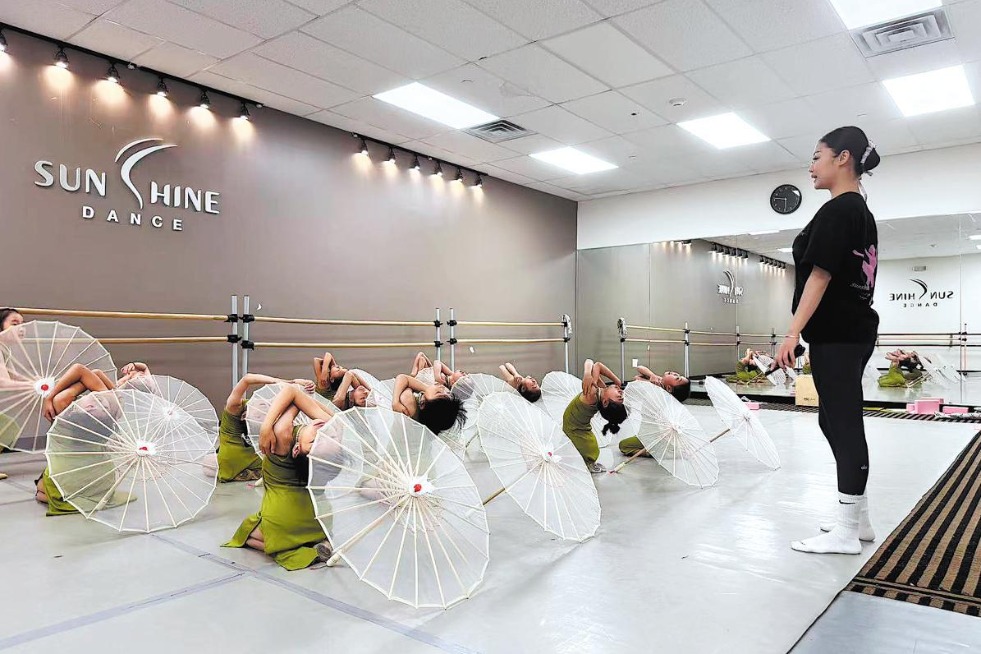Shanghai is a city of taste

Editor's note: To understand China, sit down to eat. Food is the indestructible bond that holds the whole social fabric together and it is also one of the last strong visages of community and culture.
Shanghai is a city that takes its food seriously, and compared with the rest of China it's the one most willing to spend more - much more - on gourmet pleasures.
Shanghai natives love to eat, and wide-eyed, first-time visitors to the city cannot help but be seduced by its unique blend of cuisines. Yes, there is benbangcai, the food of the "local clans", but the pleasures of eating in or out extends far beyond physical or even cultural borders here.
| Clockwise from top: "Drunken" raw crabs are a byproduct of huangjiu, a favorite mealtime tipple. Malantou is sweet baby greens that belong to the chrysanthemum family. Shanghai's version of hongshaorou is cooked with caramelized sugar, sweet yellow rice wine and not a drop of water. Photos Provided to China Daily |
There are so many options that even those with pampered, jaded appetites like veteran food writers find Shanghai food sophisticated and exciting.
The key word here is sophistication, as befitting a city that had gathered glamour and glitz as the "Paris of the East" and the "Pearl of the Orient" and has now finally reclaimed its rightful place again after being dormant for so long.
It's still the only Chinese city that has the vibrancy of an international metropolis, with a throbbing pulse quickened by international businesses on both banks of the Huangpu River, and now, Disneyland.
The Shanghai palate leans toward a certain sugariness, and many of its most famous dishes are sweet. There are indeed many representative dishes and a quick poll among my gourmand friends raised a long, passionate list. It would take a series of articles to do every dish they suggested justice, but I'm forced to condense it into a subjective number here for lack of space.
First, a look at dishes eaten at mealtimes. There is the famous red-braised pork belly, or hongshaorou; only the Shanghai version is cooked with lots of caramelized sugar and sweet yellow rice wine and not a drop of water. As a result, the fat melts on the tongue, and the hard-boiled eggs and knotted bean curd strips cooked with the pork soak up the flavors.
The local yellow wine, or huangjiu, is a favorite mealtime tipple that is also used widely as seasoning. In fact, there is a series of dishes that use both the wine and the fermented rice that is a byproduct of the distillation. "Drunken" raw crabs and prawns, chicken - including claws - and fish and shell fish such as the small river "mud snails" are all part of the daily diet. Seafood is a definite favorite, and besides the popular big-headed river prawns that are marinated raw in yellow wine and fiery white liquor, there is also another favorite - whole saltwater prawns seared over high heat with ginger, scallions and sugar. The shells become so crisp you can crunch them all up, while the meat remains sweet and succulent.
Even the humble carp is transformed in the Shanghai kitchen. First, it is marinated in crushed scallions and ginger with a touch of yellow wine. Then it is deep-fried until crisp and then quickly dropped into a wine, sugar and soy sauce marinade so it sizzles and soaks up the seasoning.
The Shanghai "smoked fish" turns the normally muddy-tasting carp into a treasured delicacy. Eels are also eaten often. They are filleted with expertise by local fishmongers and then turned into thick fish broths, stir-fried with bamboo shoots to become a topping for egg noodles or crisp-fried and coated with a sweet, tangy sauce.
When in season, crabs are a must. The most popular are the freshwater Chinese mitten crabs with their fur-covered claws. These are coveted for their tasty roe and milt, and in autumn, when they are at their best, prices can skyrocket. Still, the pragmatic Shanghai chef wastes nothing and uses up every tiny bit, including meat from the skinny legs.
The crabs are usually steamed whole, with a pair served to each diner so both roe and milt can be enjoyed. For those who are lazier, the crabs are expertly shelled and the meat turned into steamed soup dumplings, with a dollop of tasty roe added for flavor.
This is Shanghai's famous xiaolongbao at its best. The same roe is carefully extracted and served with the simplest of ingredients, tofu. It is a masterly pairing that brings out the full delight of the rich, golden roe, and the soft blandness of tofu acts as a foil, like brilliant sunflowers against a white garden wall.
Shanghai also has a particular branch of cooking that reflects its history under the foreign concessions. Pork chop and French fries, a tomato-flavored vegetable soup with faint memories of its Russian borscht ancestor, sugar-crusted "butterfly" pastry puffs, sponge fondants filled with sweetened cream, airy papered eggy sponges - these are all legacies from the chefs who used to work in the American, British, Russian and French quarters. Now, these culinary relics have become Shanghai's own. The city also has a reputation for liking miniature vegetables. Micro greens were on the dinner table long before it became a food fad in trendy Western restaurants. Forget about fiddly sprouts that are nothing more than a tangle of pale roots. Shanghai likes its vegetables young, green and tender.
Jimaocai, literally chicken feather greens, are the young leafy shoots of the Chinese cabbage. Malantou is another sweet baby green that belongs to the chrysanthemum family. But the most popular micro-vegetable must surely be caotou, or grass tips, with its tiny trifoliate leaves. Westerners may know it as alfafa.
paulined@chinadaily.com.cn
Shanghai favorites
Hongshaorou
When you bite into a perfectly braised square of pork belly, your taste buds blossom. There is the soft chewy sliver of skin, then the alternating layers of fat and lean, which seem to melt into each other. My favorite is the slice of hard-boiled egg that always comes with the dish, the egg white stained a chestnut red by the sauce, which acts like a palate cleanser after the rich, almost syrupy meat.
Youbaoxia
The shells of prawns are seared in oil until they are caramelized and so crisp they break apart in the mouth. The prawns can be eaten whole, with juicy succulence of sweet flesh mingling with the satisfying crunch of shell.
Hongmensun
Tender chunks of bamboo shoots are stir-fried over a high heat until their edges brown. It's pure tactile pleasure to taste the crisp and tender, the sweet and savory, and all from one ingredient and pretty simple seasoning.
Xiefendoufu
It is the simplest of dishes with a touch of decadence. Roe is extracted from maybe half a dozen crabs just to make this one dish. The result is tender tofu swimming in a rich golden sauce.
Xunyu, or Shanghai smoked fish
Smoke has nothing to do with it, but the cooking process preserves the slices of fish just as smoking would. It is a three-step procedure, with the raw fish slices marinated in crushed ginger, scallion and garlic with salt and yellow wine. The fish is then deep-fried and goes straight from the frying pan into a bowl of prepared sauce. The hot fish immediately soaks up the liquid. The fish is then drained and served - and can keep for several days without spoiling.
Yanduxian
Every Shanghai grandfather (usually the better home chef) has his own recipe for this classic salted pork, ham and bamboo shoots soup. It's what appears on festive tables or when the prodigal son or daughter comes home. It is the Shanghai equivalent to the fatted calf.
Zuixie
Every cuisine has its litmus test and "drunken" crab is it for Shanghai. Whole crabs are scrubbed clean, drizzled with fiery white liquor so they spit out all the dirt, then scrubbed again before they are dunked whole into an urn of alcoholic marinade. A week or so later, the crab shells would have softened and the meat is gelatinous. Served as it is, uncooked. Absolutely delicious.
(China Daily European Weekly 06/24/2016 page18)
Today's Top News
- Launch ceremony for Japanese version of Xi's discourses on Chinese modernization held in Tokyo
- Taiwan's chip gamble will spell its doom
- US visa policy policing students
- Generative AI facilitates smart governance
- Africa's green transition gets fresh vitality
- China-EU green ties set to expand































